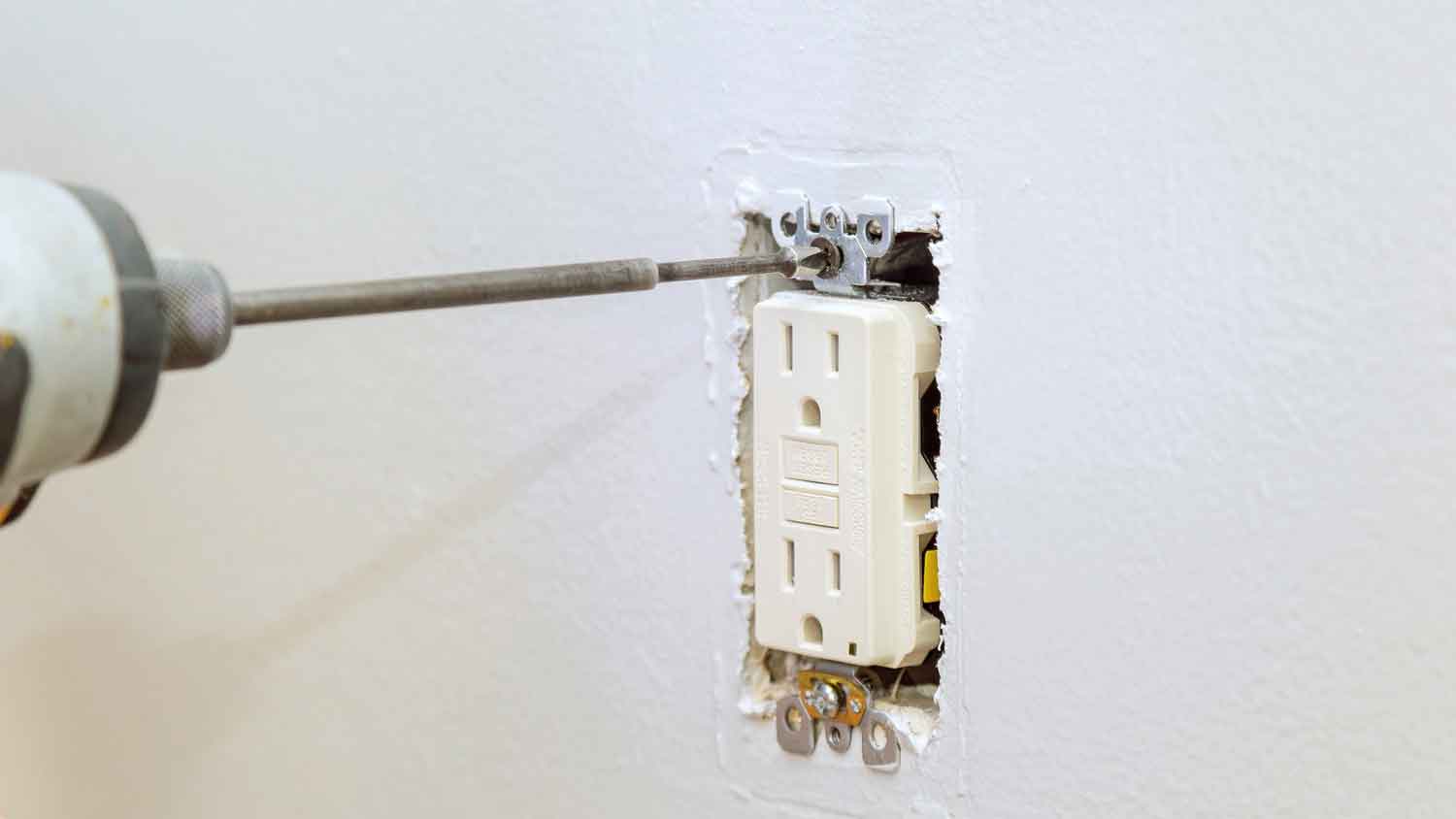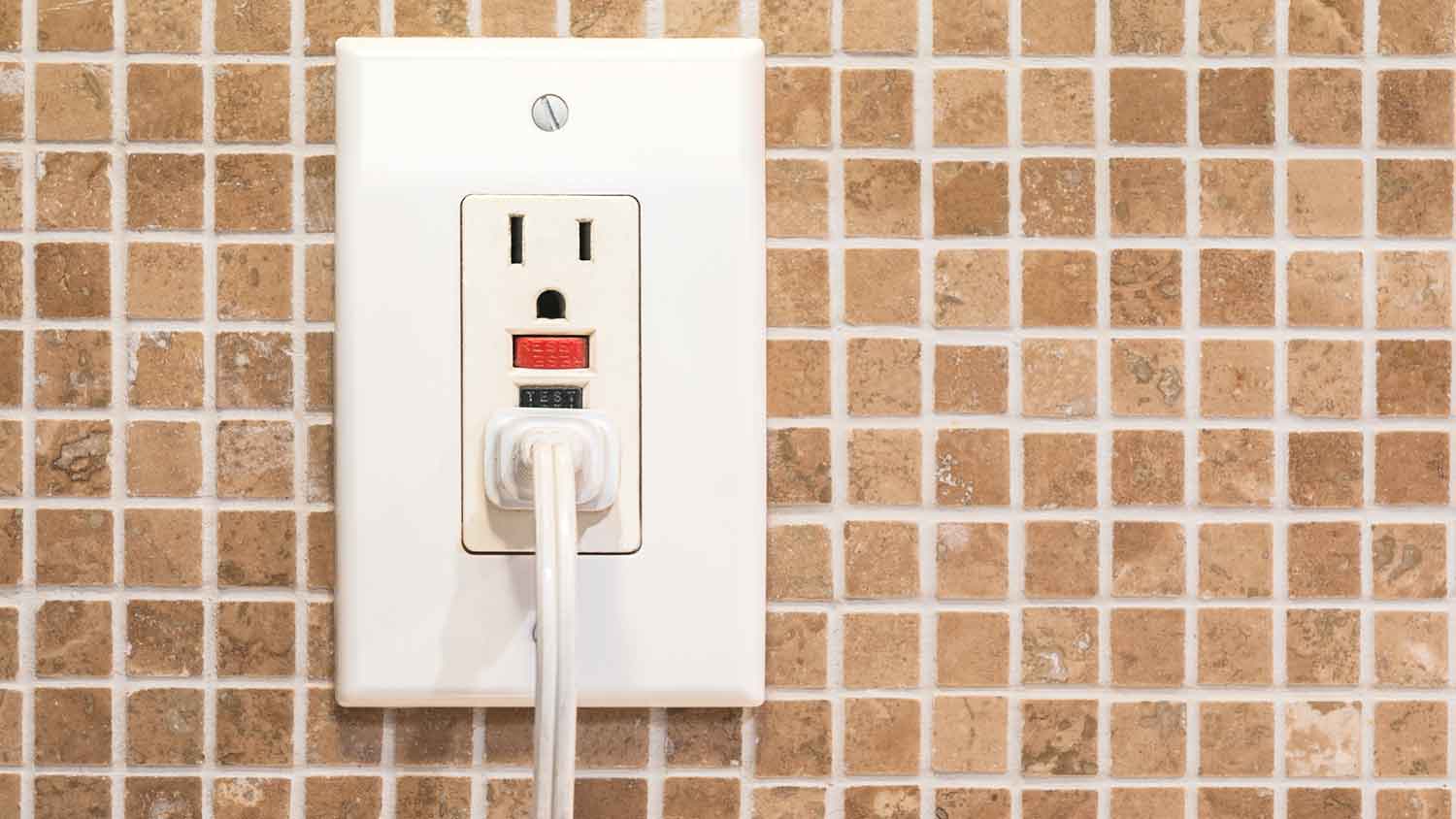
Installing an outdoor outlet is a relatively affordable way to take your outdoor space to the next level. Find out the cost to install outdoor outlets
Track down the reason the outlets aren’t working in one room


Outlets not working in only one room can be due to a variety of factors.
Improper working outlets can be a fire hazard.
Outlets typically last 15 to 25 years.
You're bustling around going about your day when you plug in a device, but it isn't getting any power. The rest of your home is operating as usual, but the outlets are not working in one room in particular.
Outlets not working correctly can be a dangerous sign and stem from various causes. In some cases, you may be able to figure out and fix the issue yourself, but dealing with electricity is risky business. In most cases, it's best to call in an electrician to diagnose and fix the issue. Here are the main reasons outlets quit working, along with some troubleshooting tips.
When taking on this project, expect questions only a pro can answer. With our network of local pros, you'll get the job done and your questions answered—without the hassle and stress of doing it yourself.

A common reason for outlets not working in one room is because the circuit breaker tripped. Circuit breakers are designed to automatically cut the current flow of electricity to the circuit in the event it becomes overloaded. This protective tool can help prevent electrical fires, but if your circuit breaker trips often, there’s likely a larger issue.
You can troubleshoot this issue yourself by locating the electrical panel and checking to see if any breakers are in the "off" position. If so, you can switch them back to the "on" position and see if that solves the issue. If that method doesn’t resolve the one-outlet problem, contact a local electrician and hire them to inspect and repair it.

All the outlets that are on the same circuit can be affected by loose wires. You should never touch an open outlet, but one indication of a loose wire is if it feels warm when your hand is near it. Loose wires can be an electrical fire hazard. Although you can check the wiring yourself after turning the breaker off, it's best to call in a professional electrician to avoid the risk of electrocution.
If your home was built during or before the mid-1960s, you may have a fuse box instead of a circuit breaker. Fuse boxes work by interrupting electrical current when it is short or overloaded. So, a blown fuse can be the cause of outlets not working in one room.
Remember, dealing with fuse boxes or anything electrical is extremely dangerous. We highly recommend calling in a professional electrician to deal with this issue. If you try checking for blown fuses yourself, shut off the main electrical power to the system before checking the fuses. If fuses are labeled correctly, locating and checking to see if it's blown will be easier. If a fuse is blown, it will appear cloudy, scorched, or the metal piece inside it will be broken.

A tripped GFCI outlet can be the cause of outlets not working in one room. These types of outlets protect household members from electrical shock in rooms where water is present, such as bathrooms, kitchens, and laundry rooms.
Ensure no water or moisture is present, and you aren't touching water before unplugging devices and trying to reset the outlet. If it's safe to do so, press the reset button located on the front of the outlet. It should click, and your devices should work if that is the cause of the issue.
In some cases, you may have a faulty outlet. It may not be as common as the other causes, but it can happen. The other reason is your outlets are old. Typically, outlets last 15 to 25 years, but they can wear out faster from overuse. One faulty or worn-out outlet may trip the breaker, which will cause the outlets not to work in one room.
If you notice sparks when you plug in an item, discoloration, smoke, or burning plastic odor coming from an outlet, they must be replaced by a professional electrician immediately.
Replacing an electrical outlet costs anywhere from $125 to $200, depending on the size and complexity of the job. Some outlet types, like a recessed outlet, are more expensive to replace than others. Additionally, replacing an outlet may require related tasks to ensure your electrical system is up to snuff. Upgrading an electrical panel from 60 or 100 amps to 200 amps costs between $800 and $4,000, while repairing or replacing a loose switch costs an average of $150. Adding a new circuit comes in at approximately $700.
Unless you have serious electrical know-how, this is a job best left to a professional. Local electricians will be experienced and licensed, ensuring a smooth repair or replacement process. This is for several reasons. Electricity is dangerous, and a misstep can lead to more problems. If you mess up a DIY electrical job and experience a house fire, your home insurance may not cover it.
From average costs to expert advice, get all the answers you need to get your job done.

Installing an outdoor outlet is a relatively affordable way to take your outdoor space to the next level. Find out the cost to install outdoor outlets

Keep pool-side dreams from getting short-circuited by being aware of pool electrical installation costs and how they can affect your overall budget.

The average cost to replace an electrical mast is around $750, depending on the size and extent of the replacement. Read on to budget for a meter riser.

If your plugs are sliding out halfway after you insert them into the outlet, this is a fire hazard. Learn how to fix loose outlets in your home.

Is it acceptable to have an electrical panel in a bathroom? Keep reading to find out the best location for this essential feature.

Learn how to install a C-wire as part of your smart thermostat installation and discover other options that may work for your HVAC wiring.